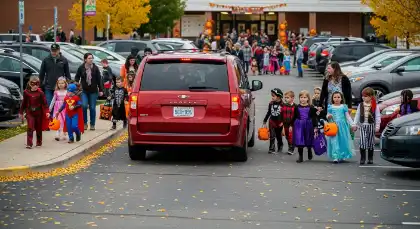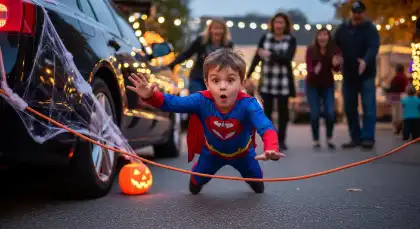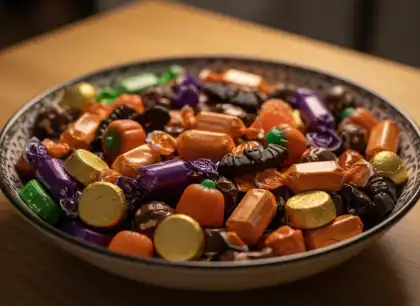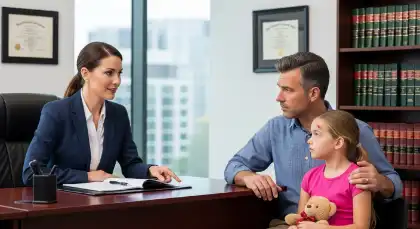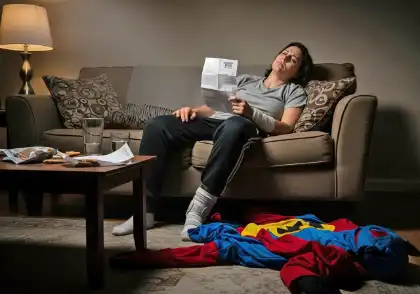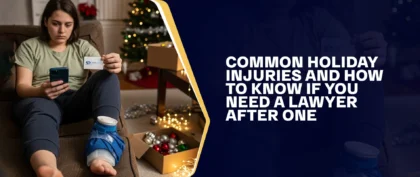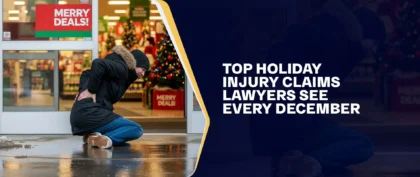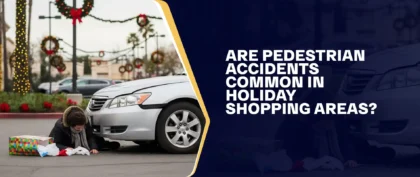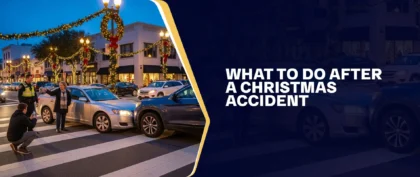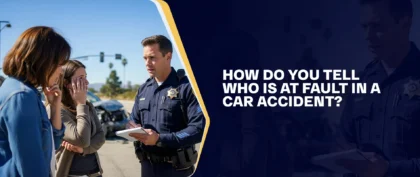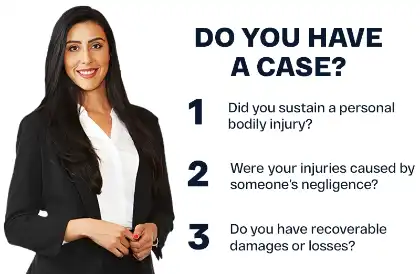TL;DR: “Trunk-or-Treat” is considered a safer, community-driven alternative to traditional trick-or-treating, where cars are decorated, and candy is handed out. While it’s organized, risks such as moving vehicles and poor lighting can still lead to injuries.
Table of Contents
A trunk-or-treat event is a community gathering held in a parking lot to celebrate Halloween. Instead of their homes, families decorate the trunks of their vehicles and hand out candy to children in parks. Instead of going from house to house, kids move from one car to another to collect sweets. Many of these events include fun activities, such as games, face or pumpkin painting, and cook-offs. It offers a fun and organized way to celebrate Halloween in a single location.
These events are popular throughout the United States, especially in California. Schools, churches, and neighborhoods often host them to encourage safe and convenient community involvement. However, accidents and injuries can still occur because of:
- Vehicles moving during setup or cleanup.
- Crowded parking lots with limited visibility.
- Slippery or uneven pavement.
- Unstable decorations, props, or electrical cords.
- Unsupervised dogs or other pets.
- Candy or snacks that can lead to choking or allergies.
- Fires or electrical issues caused by faulty decorations.
When these hazards lead to accidents, what begins as a fun night can turn into a real-life nightmare. Victims can experience physical pain, emotional distress, and financial strain from medical treatment or missed work. Legal professionals who handle Halloween injury claims can help you assess who may be liable and assist you in seeking potential compensation.
To schedule a free initial consultation, call (888) 488-1391. Qualified injury lawyers at AK Law Firm can listen to your story and assess any legal options available to you.
What Is Trunk-Or-Treating?
Trunk-or-treating is a community Halloween event where families park their cars, decorate the trunks, and distribute candy to children. It began in the late 1990s when churches and local groups sought a safer way for children to celebrate Halloween. The idea quickly spread to schools, neighborhoods, and community centers across the nation.
Instead of walking from house to house, children move from one decorated car to another. The event takes place in a blocked-off area, often a parking lot, where organizers can control traffic and lighting. This way, it is easier for adults to supervise the children and keep everyone safe.
Communities host this Halloween event for several reasons:
- Community Connection — Families, neighbors, and local institutions can come together to celebrate. This event creates shared experiences that strengthen the community bond.
- Safety & Security — Children can collect candy without crossing dark or busy streets. Since it’s a community event, concerns about “stranger danger” are also reduced.
- Convenience — Decorating a car is simpler than decorating an entire house. Parents can also supervise their children in one location without having to move around too much.
Trunk-or-treating is a fun way for families to celebrate the spooky season, but safety remains a top priority. With cars, crowds, and decorations in one place, accidents can still occur if people are not careful.
Common Trunk-Or-Treat Hazards
Several factors make trunk-or-treat events risky. These events mix cars, excited kids, and plenty of decorations, but as night falls, the limited lighting makes everything harder to see. With visibility obstructed by the decorations and the crowd, navigating safely becomes a real challenge.
Some risks include:
- Vehicles, crowds, and low light can reduce visibility, making movement more difficult.
- Costumes and props can obstruct vision or pose a tripping hazard.
- Children who are excited for the event may run or dart between cars.
- Decorations or photos may divert adults’ attention from safety concerns.
Safety risks can take various forms during these events. Understanding these common hazards and how to prevent accidents at a trunk-or-treat event can help keep everyone safe throughout the celebration.
Vehicle Risks
Even parked or slow-moving cars can cause accidents in parking lots during trunk-or-treat events. Many events take place in lots where drivers are setting up or leaving. Vehicles moving during setup or cleanup can strike pedestrians walking nearby or cause rear-end accidents.
Common causes include:
- Unsafe backing practices.
- Poor traffic control or missing barriers.
- Speeding or distracted driving.
The National Safety Council (NSC) reports that tens of thousands of collisions occur in parking lots and garage structures each year. During crowded events like trunk-or-treats, that risk may increase even more.
How can event organizers prevent such accidents? They can do the following:
- Control vehicle movement with cones or barriers to ensure safety.
- Establish one-way routes for entry and exit to facilitate smooth traffic flow.
- Assign trained volunteers to direct traffic and assist pedestrians as needed.
Parents can protect their children by urging them to:
- Stay in designated walking areas.
- Avoid running between vehicles.
- Walk with a group for better visibility.
Victims injured in these situations often seek free legal advice from an accident lawyer to understand their rights. Our car accident lawyers offer free case evaluations. We can review your situation and explore your possible options for seeking compensation after a car crash.
Slip-And-Fall Hazards
The Consumer Product Safety Commission (CPSC) reports that each year, ERs treat around 800 Halloween-related falls. This figure accounts for 25% of the total annual average of 3,200 injuries related to Halloween. Many of these falls happen while setting up or removing decorations. Some people also trip over their costumes while walking from house to house.
During trunk-or-treat events, fall hazards include:
- Loose cords, decorations, or candy on the ground.
- Muddy or uneven pavement that makes walking difficult.
- Dim lighting or fog machines that reduce visibility.
- Blocked walkways due to large props or displays.
Slip-and-falls can cause bruises, sprains, fractures, or head injuries. These accidents may also occur inside Halloween stores, where shoppers rush to purchase last-minute decorations. In such cases, Spirit Halloween accident lawyers can assess whether poor store maintenance contributed to the injury.
To reduce fall risks, event organizers can:
- Add portable lighting for nighttime events.
- Tape down cords and clear pathways.
- Repair cracked or slick pavement before opening the lot.
For parents, it’s recommended to have children wear comfortable shoes and Halloween costumes. Avoid costumes that drag or block their vision while walking between vehicles.
Risks Associated With Defective Products
Trunk-or-treat events rely on lights, props, and costumes to create a festive atmosphere, but defective products can cause serious harm. For example:
- Defective light strings or extension cords can cause electrical shocks or burns.
- Unstable props or displays may tip over, causing injury to children.
- Costume malfunctions, such as loose masks or long capes, can cause tripping.
To prevent these accidents, hosts can:
- Use only outdoor-rated cords and decorations.
- Secure all props to avoid tipping or collapsing.
- Replace damaged wires or broken lights immediately.
- Warn against costumes with long fabric or masks that obstruct vision.
Parents should inspect their children’s costumes ahead of time and trim any long fabrics or remove accessories that could block vision or movement.
If a defective product causes injury, victims may file a product liability claim. The manufacturer, retailer, or distributor may be held responsible for releasing an unsafe item.
Risks Associated With Animals
The excitement, crowds, and flashing lights at trunk-or-treat events can easily startle pets. Even calm dogs may become anxious or defensive, leading to bites or other incidents.
Be aware of common risks involving pets, including:
- Dogs may react aggressively to costumes, loud sounds, or flashing lights.
- Startled pets may bite, jump on, or knock down children or adults.
- Handlers may lose control of leashes in crowded areas.
Victims may suffer wounds or infections and may require emergency treatment, such as rabies shots or antibiotics. The World Health Organization (WHO) reports that over 4.5 million people are bitten by dogs in the U.S. each year, with children being the most frequent victims.
To prevent dog bite injuries, event planners can establish pet-free zones or enforce leash rules. Clear signage and announcements reminding owners to control their pets can also help. Parents should remind children not to approach unfamiliar dogs and to remain alert around all animals present at the event.
Under California’s strict liability law, dog owners are responsible for injuries their pets cause, even if the animal has never shown aggression before. Victims may seek compensation from pet owners. Consulting an attorney may be beneficial if you want to understand what your legal options are after a dog bite.
Candy & Allergy Hazards
Candies are a staple during Halloween, but they can also cause choking or allergic reactions. Additionally, irritants such as latex and dyes in costumes can also trigger allergies or rashes. Here’s what parents need to know:
- Small or hard candies may pose choking hazards.
- Face paint, latex, or costume jewelry may cause skin irritation.
- Fog or scented sprays can trigger asthma or breathing problems.
- Allergens such as peanuts, milk, soy, and gluten can trigger severe allergic reactions.
The Food Allergy Research & Education (FARE) organization notes that as of 2019, one in 13 children in the U.S. has a food allergy. This statistic highlights the importance of exercising caution when handling candy, especially during Halloween events.
Hosts can reduce the risk by:
- Offering only factory-sealed sweets.
- Posting allergen notices near food stations.
- Providing non-food goodies such as stickers or toys.
Parents should inspect all candy before allowing their children to eat it and discard anything with damaged or open wrappers. If allergic reactions occur due to mislabeled or unsafe candy, personal injury lawyers can review the case and determine whether the seller or manufacturer may be liable for the incident.
Fire & Electrical Hazards
While lights, inflatables, and other powered decorations make setups more eye-catching, they also increase the risk of fires and burn injuries. These incidents may occur when:
- Candles inside pumpkins or displays ignite nearby fabrics, paper, or decorations.
- Overloaded outlets and damaged cords cause sparks or short circuits.
- Poorly maintained electrical setups overheat and start small fires in parking areas.
For hosts:
- Use battery-powered lights instead of candles.
- Keep electrical cords secured and out of walkways.
- Avoid overloading outlets or connecting multiple cords to a single outlet.
- Keep a fire extinguisher and first-aid kit nearby.
For parents:
- Keep children away from electrical displays and open flames.
- Do not let children wear long costumes near heat sources.
If you sustain a fire-related injury during Halloween, seeking legal help from a lawyer is an option. They can collaborate with accident reconstructionists to investigate the cause of your injury. Lawyers can help determine whether negligence, poor maintenance, or defective equipment led to the incident. That way, you know who to seek compensation from.
Who May Be Liable After A Trunk-Or-Treat Injury
Liability for a trunk-or-treat injury depends on the circumstances surrounding the incident. Several parties may be held responsible based on the event’s setup, supervision, and safety measures.
| Potentially Liable Party | When They May Be Held Responsible |
|---|---|
| Event Organizers or Hosts | When they fail to provide adequate lighting, manage crowds, or restrict vehicle movement during the event. |
| Property Owners or Managers | When unsafe property conditions, such as uneven pavement, inadequate lighting, or loose cords, cause injuries. |
| Drivers | When they strike pedestrians or other participants while driving during setup, cleanup, or the event. |
| Dog Owners or Handlers | When their dogs bite attendees, even if the animal has no history of aggression (only applies in states with strict liability laws). |
| Manufacturers or Sellers | When defective decorations, lights, costumes, or fog machines malfunction and cause harm. |
Determining fault can be complex, especially when multiple parties share responsibility. Some states follow a modified comparative negligence system, while others use a pure comparative negligence system. In at-fault states, such as California, courts may reduce your compensation based on your degree of fault.
What To Do After A Trunk-Or-Treat Injury
Getting hurt at a community trunk-or-treat can be stressful, especially when children are involved. Knowing what to do immediately after the accident is important. These steps can help protect your health, your rights, and your ability to file a claim later.
- Seek medical attention immediately. This way, doctors can accurately assess the full extent of your injuries and provide the proper treatment. Follow the prescribed treatment and keep copies of all medical reports and receipts.
- Document the scene. Take photos or videos of:
- The area where the injury occurred.
- Hazards such as poor lighting, cords, or decorations.
- Warning signs (or lack thereof).
- Your visible injuries.
- Additionally, collect the names and contact information of any witnesses.
- Report the incident to the event organizers or property owners as soon as possible. Request a written incident report and obtain a copy for your records.
- Keep detailed records of all documents related to the injury, including:
- Medical bills and prescriptions.
- Diagnostic test results.
- Proof of missed work or lost income.
- Receipts for damaged personal items or vehicle repairs.
- Be cautious when speaking to insurance companies. Avoid providing detailed statements until you understand your rights and obligations. Consider consulting an accident lawyer before communicating with adjusters.
- Consult an experienced personal injury attorney. They can assess liability and review insurance coverage. Trunk-or-treat injury lawyers can also handle communications with insurers and gather additional evidence to support your claim.
FAQs About Trunk-Or-Treat Safety And Injury Claims
Trunk-or-treat events aim to be safe and fun, but injuries can still happen. The following common questions can help you understand your rights, claim options, and safety concerns related to Halloween events.
For more information on general personal injury topics, visit our Frequently Asked Legal Questions page. You can also contact our California injury lawyers at (888) 488-1391 for questions specific to trunk-or-treat accidents. We offer free initial consultations.
How Many Children Are Hit By Cars On Halloween?
Many accidents happen on Halloween, making it one of the most dangerous nights of the year for young pedestrians. While there is no exact number, Safe Kids Worldwide reports that children are twice as likely to be hit and killed by a car on Halloween than on any other night of the year.
A study published in 2018 found that the risk of a pedestrian getting killed by a car is 43% higher on Halloween than on a typical fall evening. Children between 4 and 8 years old face a tenfold increase in pedestrian fatality risk on Halloween.
Reading a Halloween safety guide can help you remember practical tips to help reduce these risks. It also provides safety reminders to keep both drivers and families safe during the celebrations.
How To Identify Tainted Candy?
Cases of drug-infused or tampered candy are extremely rare, but it is still wise to check your child’s Halloween treats before they eat them. Watch for:
- Damaged packaging, such as torn, unsealed, or loose wrappers.
- Unusual appearance, including discoloration or residue on the candy.
- Odd smells that seem chemical or unfamiliar.
- Homemade snacks from people you do not know.
- Small holes or punctures in the packaging may indicate tampering.
If you suspect that a candy has been tampered with, do not let your child eat it. Keep the candy in a ziplock bag and report it to local authorities.
What Is The Time Limit To File An Injury Claim In California?
In California, the time limit for filing a personal injury claim depends on the parties involved. This period is known as the statute of limitations.
The general deadlines are as follows:
- Personal Injury Claims — You have two years from the date of the injury to file a lawsuit.
- Claims Against a Government Agency — You need to file an administrative claim within six months of the incident.
- Claims Involving Minors — The deadline is typically extended until two years after the child’s 18th birthday.
Filing after the deadline generally results in losing your right to seek compensation. To help you track these deadlines, consult a personal injury lawyer as soon as possible after the accident.
How Much Does It Cost To Hire A Personal Injury Lawyer In California?
The cost of hiring a personal injury lawyer in California depends on the firm’s fee structure. Some attorneys charge an hourly rate, others use a flat fee for specific services, and many handle cases on a contingency fee basis.
Several factors also affect the total cost:
- The complexity of the case.
- Amount of evidence and investigation needed.
- Number of involved parties.
- The required time and resources to prepare for trial.
Most personal injury attorneys, including those at Arash Law, work on a contingency fee basis. Under this fee structure, attorneys receive a percentage of the payment if the case is resolved through a settlement or award.
You won’t pay any legal fees if we don’t recover compensation on your behalf. Note that filing fees, medical record expenses, and other case-related costs may still apply, even if the outcome is not in your favor. Your personal injury attorney can explain this payment arrangement during your consultation. This way, you clearly understand how your attorney handles fees and expenses throughout your case.
How Much Compensation Can You Pursue After A Trip Or Fall Accident?
The compensation you can pursue for a trip or fall injury during a trunk-or-treat event depends on several factors, including the:
- Severity of the injury.
- Cause of the accident.
- Number of the potentially liable parties.
If you have a valid personal injury case, the damages you can claim may include:
- Medical bills for treatment and rehabilitation.
- Lost wages and future earning losses.
- Pain and suffering for physical and emotional distress.
- Property damage to personal items.
- Out-of-pocket costs such as transportation or home adjustments.
The total amount also depends on the available evidence, medical records, and insurance coverage. Many people ask, “Do I really need a personal injury lawyer?” While it’s not required, having one may be beneficial. Lawyers handling personal injury cases can investigate the incident and identify potential damages you shouldn’t miss. They can also estimate the value of your potential Halloween accident claim.
Injured At A Trunk-Or-Treat Event? Understand Your Legal Options
Trunk-or-treat events are popular in California as a fun and safe way for families to celebrate Halloween. Nonetheless, despite careful planning, accidents can still occur. Crowded parking lots, inadequate lighting, or unsafe setups can result in injuries.
If you suffer harm while participating in these events, you may have grounds to file a Halloween event injury claim. The California injury attorneys at AK Law assist victims of community event accidents throughout the state. Our skilled lawyers can:
- Investigate the accident and assess liability.
- Collect additional evidence such as photos, reports, and witness statements.
- Work with medical experts to document your injuries.
- Handle insurance communications and settlement discussions.
- Pursue compensation through a claim or lawsuit.
If you sustained injuries at a trunk-or-treat event, call (888) 488-1391 or complete our “Do I Have A Case?” form. Our accident lawyers offer free and confidential initial consultations.

